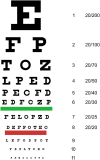The Geriatric Driver: Factors That Influence When to Stop Driving
- PMID: 27239385
- PMCID: PMC4872183
- DOI: 10.1177/2151458516644818
The Geriatric Driver: Factors That Influence When to Stop Driving
Abstract
The increase in the growth of the elderly population in the past 2 decades has been paralleled by an increase in the number of active elderly drivers. Consequentially, this growth has been accompanied by a rise in fatal road-related accidents. Due to age-related fragility, elderly drivers are more susceptible to injuries and death following a road-related accident. The increased risk of accidents has become a growing public health issue and has led to certain guidelines and restrictions for elderly drivers. Moreover, the cognitive and physiological decline that exacerbates with age has encouraged preventative measures aimed at optimizing their ability to operate motor vehicles. Some of these include yearly vision, cognitive, motor, and mental assessment tests. Results obtained from these tests may help suggest when an elderly driver becomes unsuitable to drive.
Keywords: dementia; fragility fractures; geriatric medicine; geriatric trauma; systems of care.
Conflict of interest statement
Figures
References
-
- Hutchins L. Cynthia. Opening a Vital Dialogue with Aging Family Members. Financial Gerontology Series: Part 1; 2014:1–4.
-
- Department of Transportation (US), Federal Highway Administration. Highway Statistics 2012. Washington, DC: FHWA; 2015.
-
- Preusser DF, Williams AF, Ferguson SA, Ulmer RG, Weinstein HB. Fatal crash risk for older drivers at intersections. Accid Anal Prev. 1998;30(2):151–159. doi:10.1016/S0001-4575(97)00090-0. - PubMed
Grants and funding
LinkOut - more resources
Full Text Sources
Other Literature Sources
Miscellaneous


